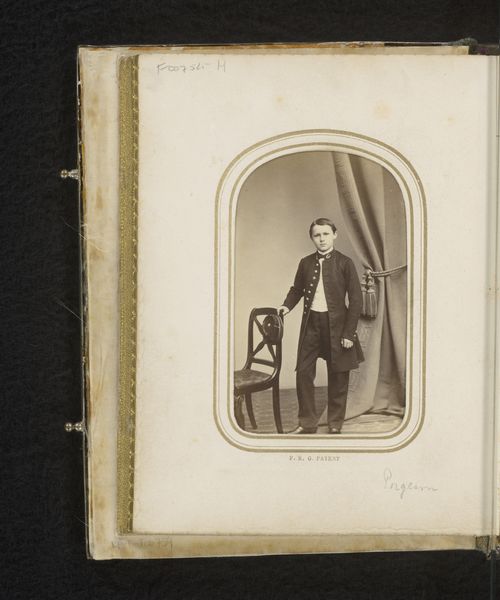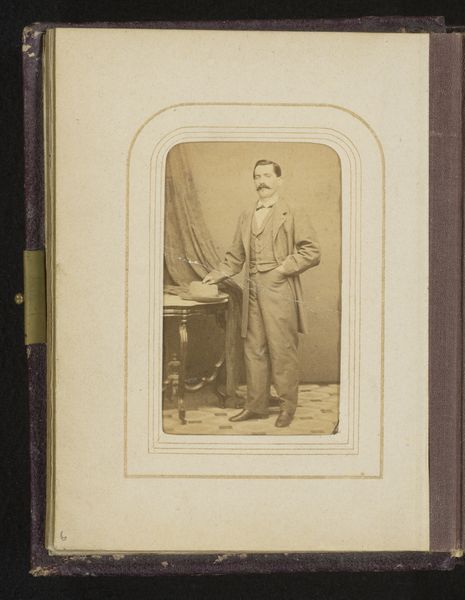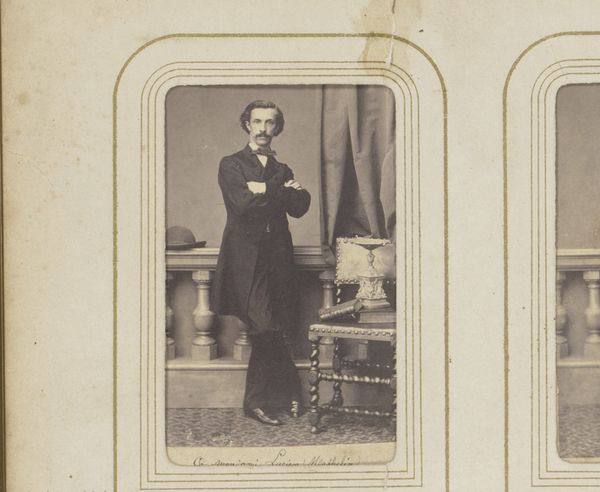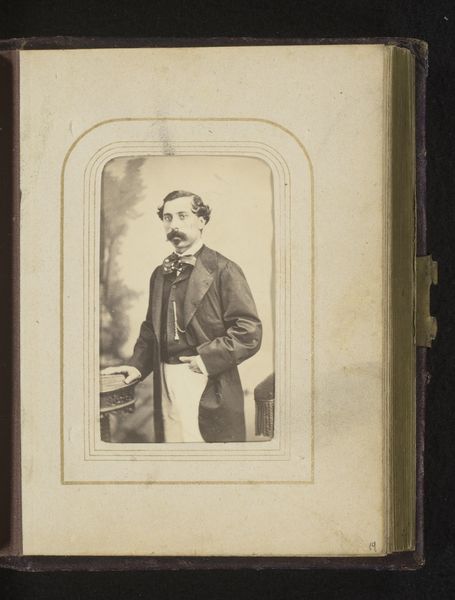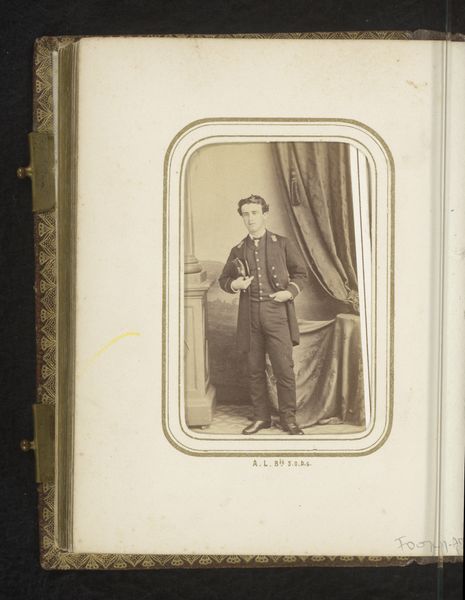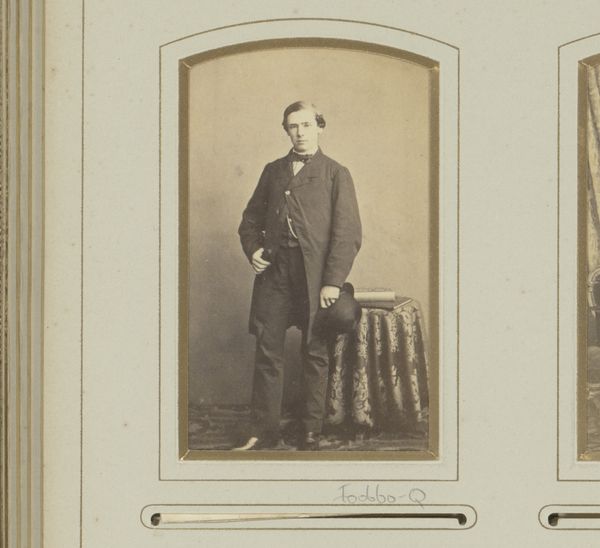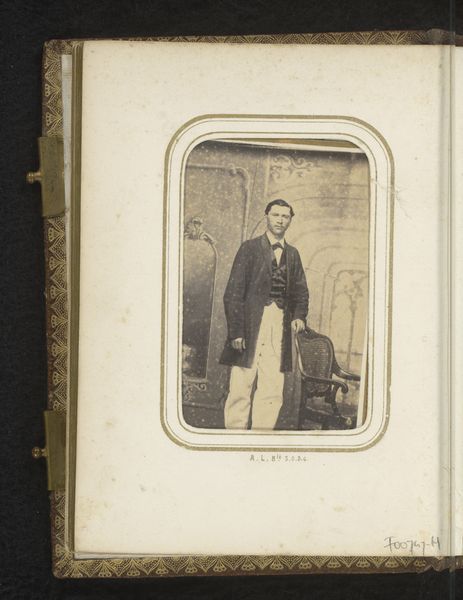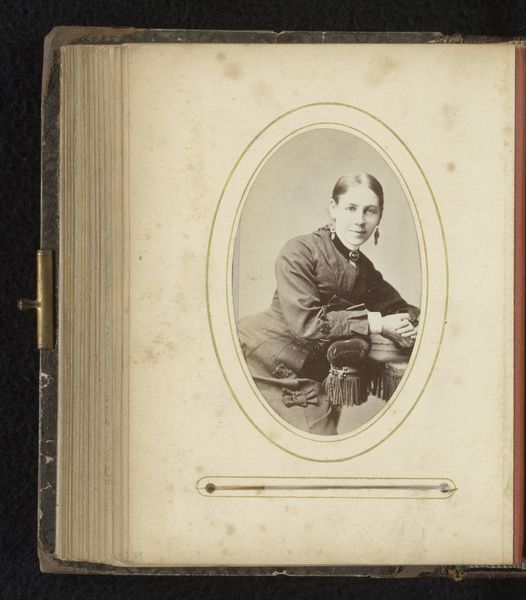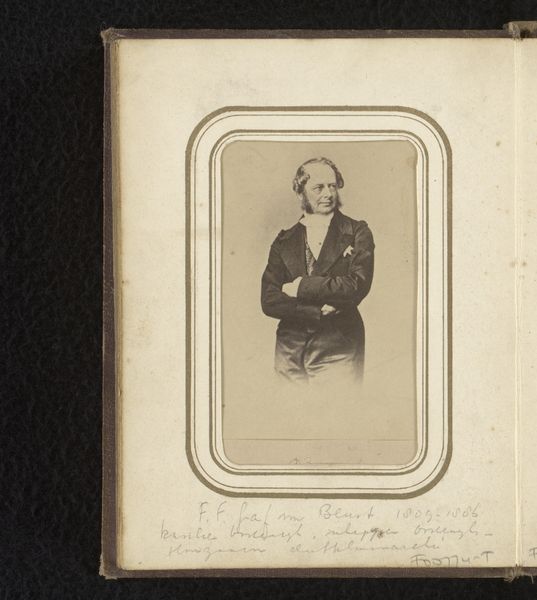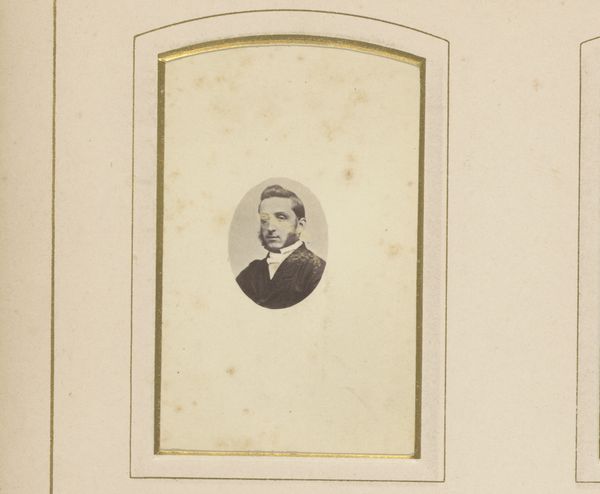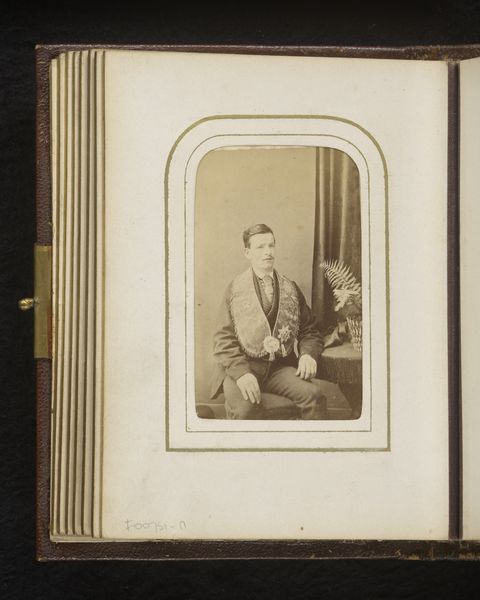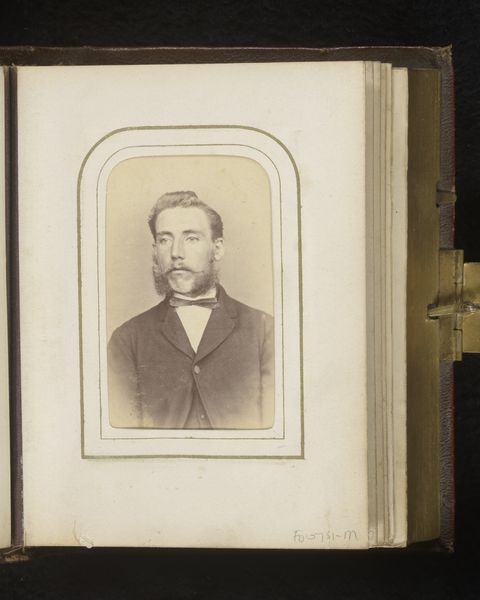
Dimensions: height 86 mm, width 52 mm
Copyright: Rijks Museum: Open Domain
Editor: Here we have a gelatin silver print, *Portret van een man met baard,* or *Portrait of a Man with Beard*, made sometime between 1855 and 1880, by Witz et Cie. The man is striking a confident pose. How do you interpret this portrait within the social context of its time? Curator: Well, it's fascinating to consider how photography like this contributed to the construction of identity in the 19th century. It served not only as a document, but also as a declaration of self. Given the prevalence of photographic portraits within the Romantic movement, this portrait invites us to consider issues of class, gender, and power dynamics that are inherent in visual representation. How does his gaze strike you? Editor: He seems very self-assured, maybe even a bit defiant. Like he is presenting a particular image of himself to the viewer, to society. Do you think the trappings of wealth are performative here? Curator: Precisely. Photography, particularly portraiture, becomes a stage for enacting social roles. His stance, the neatly groomed beard, the clothes, they all contribute to a narrative that affirms certain bourgeois ideals. It’s worth questioning whose stories get told and amplified through this medium. Also, what social strata and genders are largely missing or misrepresented? Editor: That's an interesting way to frame it; it makes me consider the role of the artist. Are they complicit in this social theater or are they also commenting on it? Curator: That's the crucial question. Analyzing the photographer's choices, like the framing, lighting, and backdrop, can give us hints about their perspective. Examining such pieces allows us to critically analyze the power dynamics that permeate both art and society. What is left out or is purposely highlighted to shape identity? Editor: I had not considered portraiture this way. It makes you wonder whose image gets immortalized, and what that says about cultural priorities then, and now.
Comments
No comments
Be the first to comment and join the conversation on the ultimate creative platform.
